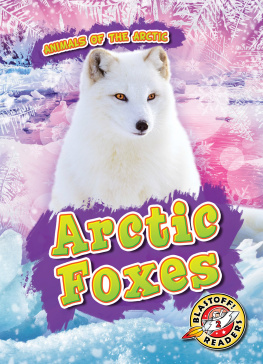HUNTERS AND
FISHERMEN
OF THE
ARCTIC
FORESTS
HUNTERS AND
FISHERMEN
OF THE
ARCTIC FORESTS
JAMES W. VANSTONE
Published 2010 by Transaction Publishers
Published 2017 by Routledge
2 Park Square, Milton Park, Abingdon, Oxon OX14 4RN
711 Third Avenue, New York, NY 10017, USA
Routledge is an imprint of the Taylor & Francis Group, an informa business
Copyright 1974 by James W. VanStone.
All rights reserved. No part of this book may be reprinted or reproduced or utilised in any form or by any electronic, mechanical, or other means, now known or hereafter invented, including photocopying and recording, or in any information storage or retrieval system, without permission in writing from the publishers.
Notice:
Product or corporate names may be trademarks or registered trademarks, and are used only for identification and explanation without intent to infringe.
Library of Congress Catalog Number: 2008039942
Library of Congress Cataloging-in-Publication Data
VanStone, James W. (John Key), 1933-
Hunters and fsherman of the Arctic forests / James W. VanStone.
p. cm.
Originally published: Chicago : Aldine Pub. Co., [1974].
ISBN 978-0-202-36277-9
1. Athapascan Indians. I. Title.
E99.A86V37 2008
978.004972--dc22
2008039942
ISBN 13: 9780-20236277-9 (pbk)
For Polly
The great expanse of Arctic and Sub-Arctic lands that stretch across the northern edge of the American continent is as difficult and demanding to man as any in the world. The Athapaskanspeaking Indians who made it their home never captured the imagination of our popular writers, however, as did the Eskimo who lived on their northern borders and the Plains Indians who lived to the south. Except to anthropologists, the Athapaskans have remained in relative obscurity, known intimately only to the missionaries, the traders and trappers, and the prospectors who invaded their forbidding territory.
James VanStone has caught the elements of the basic adaptive strategy by which these Indians mastered their intransigent environment and made it their home over many centuries, and in doing so, he has perhaps also found the reasons why they have not had as much impact on Western thought as other native Americans. The Plains Indians, with the blood and thunder of their raidings, the individual drama of their vision quests, appealed to that part of our culture that was forged on the frontier where both action and isolation were primary qualities. The Eskimos, with their elaborate technology for extracting a livelihood from the Arctic ice appeal to Yankee ingenuity.
Athapaskan culture was of a different orderless dramatic, but no less adaptive. It involved, as VanStone says, a cultural flexibility, a quiet competence, a sustained ability to blend in with local environment. For these northern lands are not richly endowed with sustenance for human life, nor are they uniform. Men had to find the particular resources on which they could build a lifehere fishing, there trapping, elsewhere a single hunter following the lone moose or a coordinated group following herds of caribou, or more likely some combination of these varying with the seasons. These adaptations have not only required a proficiency in the tools and techniques for exploiting this difficult and diverse habitat, but also the creation of appropriate institutions for collaboration in these endeavors. Athapaskan social organization was adjusted to the different demands of these tasks, not only from one band to the next but seasonally within the same band. One surprising implication of this, in view of dominant anthropological thought, is that bilateral kindred rather than patrilocal bands appears to be the solution of choice.
Athapaskan Adaptations illuminates this relatively obscure area of the world and brings it, and the cultures it supported, into the context of modern anthropological theory.
Walter Goldschmidt
The intent of this study is to describe the ethnography of northern Athapaskans adequately for the beginning student, whether undergraduate or graduate. The book does not pretend to be more than an introduction to what I firmly believe, although with admitted prejudice, to be the most interesting hunters and gatherers on the North American continent. In keeping with the orientation of other volumes in the Worlds of Man series, general patterns are described at the expense of extensive ethnographic detail in the hope that the student will acquire a broad framework and, at the same time, an appreciation for the varieties of adaptations that have enabled northern Athapaskans to survive in their extensive and varied geographic environment. More ethnographic detail can be obtained from the monographs and articles listed in the references and suggested further readings at the end of the book. Consideration is also given to the effects of European contact, particularly the fur trade, which have been the prime factor underlying the culture patterns of contemporary northern Athapaskans.
In order to generalize about the various northern Athapaskan groups, it has been necessary to rely heavily on the work of others. This study owes a considerable intellectual debt to the writings of the pioneer students of northern Athapaskan culture: June Helm, John Honigmann, Diamond Jenness, Catherine McClellan, Robert McKennan, Cornelius Osgood, and Richard Slobodin, to name only a few. In particular, I wish to express my gratitude to June Helm, Catherine McClellan, and Robert McKennan who offered valuable suggestions at various stages in the development of this book, and to whose published writings I am more than ordinarily indebted. The manuscript was typed by Lenore Slenczka and Eva A. Ziemba with accuracy and dispatch. The maps were drawn by Zbigniew T. Jastrzebski and Patricia J. Brew.
At various stages of preparation, these pages have been read with thoroughness and thought by Alexander J. Morin of Aldine Publishing Co., and Walter Goldschmidt, editor of the Worlds of Man series. To both of them, my sincere thanks.
Finally, I wish to express appreciation to my wife, Mary Helms VanStone, whose enthusiasm, encouragement, patience, and sympathy, not necessarily in that order, have endured through several drafts of the manuscript. It is to her that the final result is dedicated.
Contents
The University of Alaska near Fairbanks is located at the edge of a bluff overlooking the Chena River, a tributary of the Tanana, itself an important tributary of the great Yukon River. Although today the University community is part of the greater Fairbanks metropolitan area in central Alaska, traditionally the region was occupied by the Tanana, one of the groups of northern Athapaskan Indians who inhabit interior Alaska and the adjacent northwestern parts of Canada. At the present time, there are many Athapaskan Indians living in the Fairbanks area, but the Tanana can no longer be said to occupy their traditional territory, nor to practice their traditional way of life.
In the fall of 1951, following completion of my graduate studies, I joined the faculty of the Department of Anthropology at the University of Alaska. Like most newcomers to the north, my strongest impressions during that first year centered around the long nights and bone-chilling cold of an interior Alaskan winter. The preceding year, as a graduate student with research interests in the arctic and subarctic, I had enrolled in a course dealing with circumpolar peoples and had learned that although winters in the arctic interior were long and bitter, and absolute temperatures were nearly as low as anywhere in the world, the region lacked the gales and high humidity of the arctic coast. Therefore, living conditions were easier than along the coast where strong winds combined with dampness and extreme cold required Eskimos to wear highly specialized fur clothing and live in solidly constructed underground dwellings.









